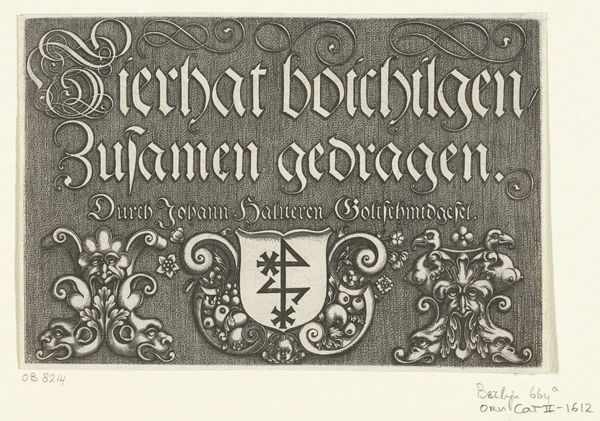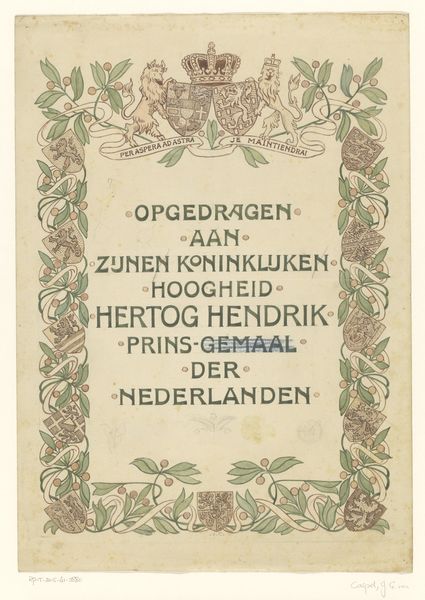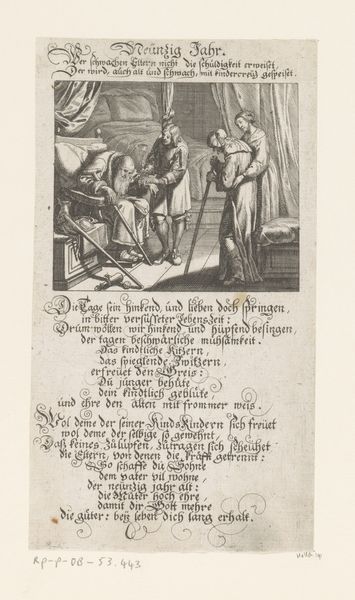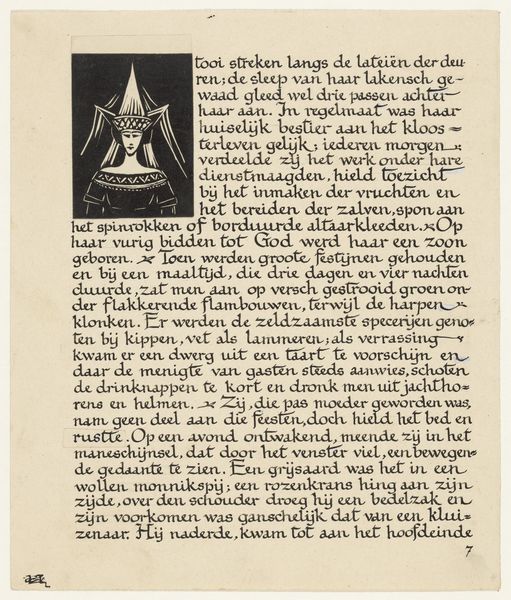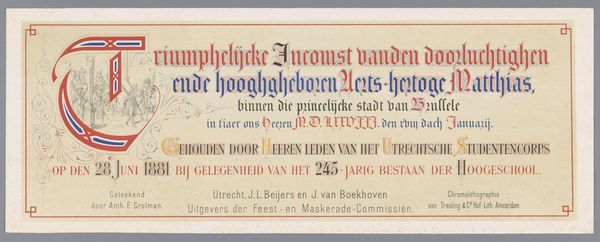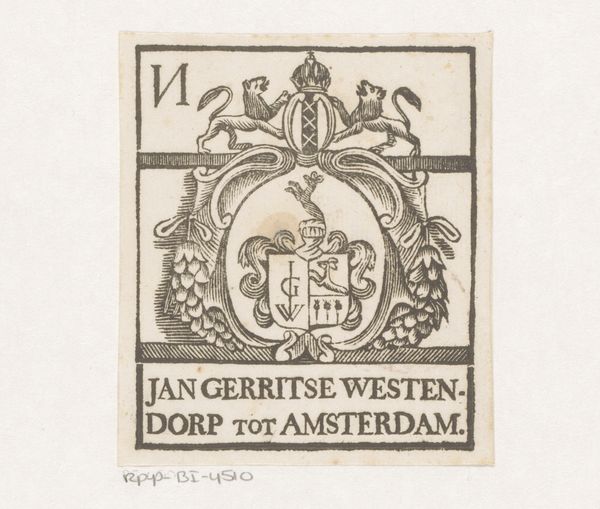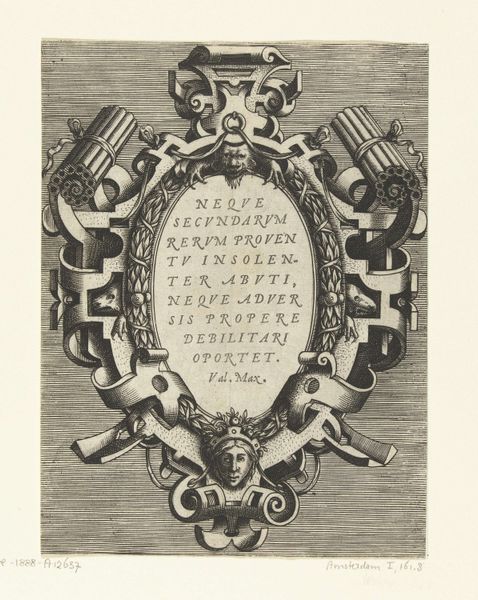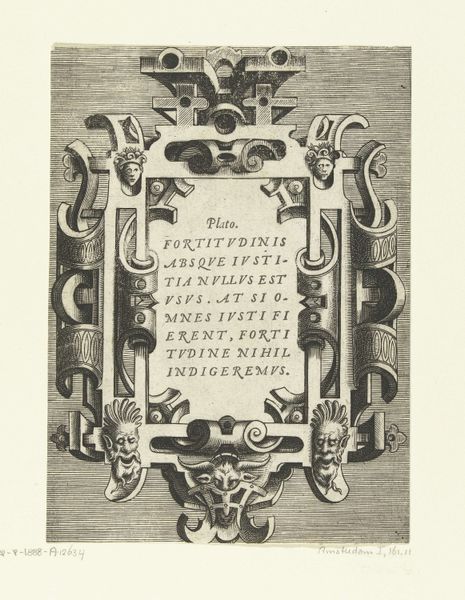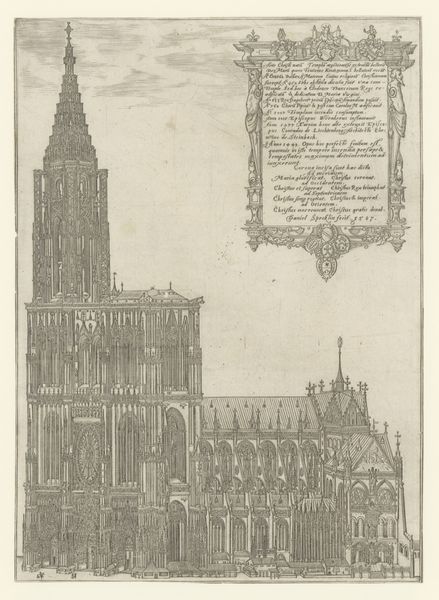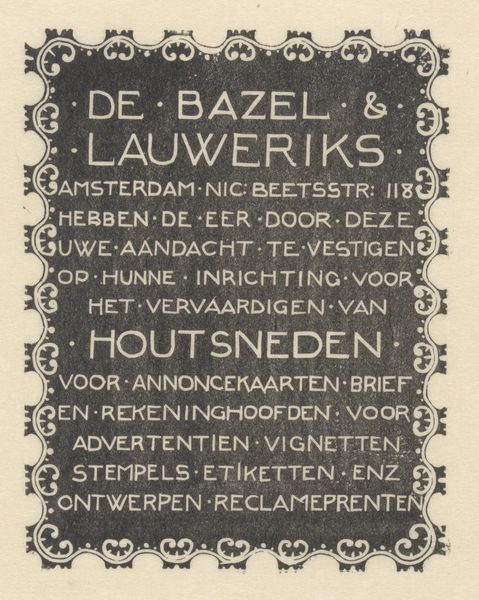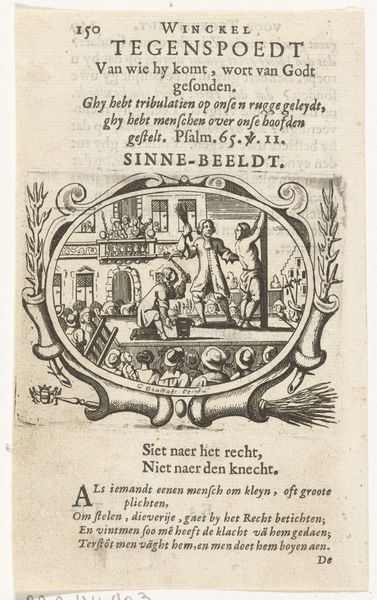
graphic-art, print, typography, woodcut, poster
graphic-art
type repetition
aged paper
art-nouveau
old engraving style
hand drawn type
landscape
personal sketchbook
typography
fading type
woodcut
ink colored
thick font
poster
historical font
columned text
Dimensions: height 120 mm, width 79 mm
Copyright: Rijks Museum: Open Domain
Curator: The immediate impression I get from this print is one of fragility. The thin lines of the woodcut, combined with the aged paper, convey a delicate sense of time. Editor: Indeed. What you’re describing speaks to its origins in 1899, by Wijnand Otto Jan Nieuwenkamp. The work is a poster, a printed announcement, titled "Biljet voor Kunst Zij Ons Doel in Haarlem"—a poster for the art society in Haarlem. Curator: Haarlem, yes, and even if I didn't recognize the Dutch, the composition itself speaks to me. The skyline barely peeks out from below this ruined, or perhaps half-constructed building. It calls into question ideas of progress and perhaps critiques what ‘civilization’ truly builds. The weight of progress always carries with it the burden of what it leaves behind. Editor: An insightful observation, given the symbolism inherent in Art Nouveau. The imagery feels burdened somehow, especially when considering the lettering: those ornamented capitals which border the text, with imagery recalling plant-life and vegetation, speak to a sense of rebirth and growth as well. And of course, “Kunst Zij Ons Doel”, Art is Our Goal. Curator: A society aiming to rebuild itself, as its surroundings seemingly crumble. To make ‘art’ its singular goal hints at elitism in the late 19th century. Editor: You see the organization as complicit within its surrounding problems, in their inability to see beyond the ivory tower? The building isn’t crumbling entirely. One must recall that the organization could also be a prescient allegory—seeking refuge in the pure creation of ‘art,’ it fortifies the symbolic foundation for the future; this could, again, hearken back to that idea of nature and rebirth, given Art Nouveau's symbology. Curator: Well, this piece has given me a lot to think about; thank you for bringing in a historical lens! Editor: And you brought it into our moment, giving that symbolic history real urgency!
Comments
No comments
Be the first to comment and join the conversation on the ultimate creative platform.
